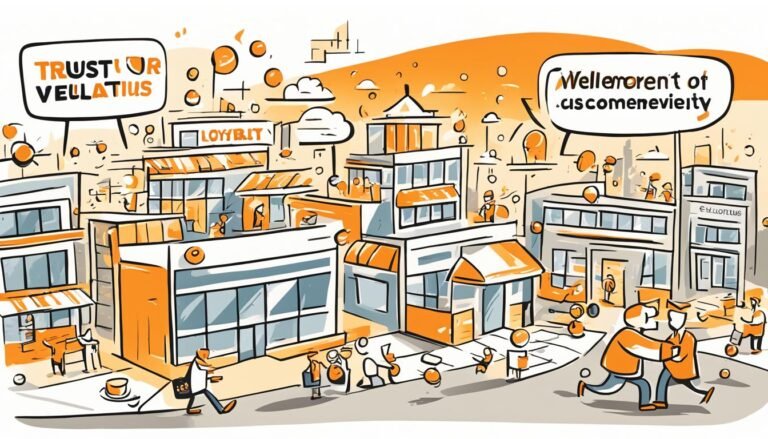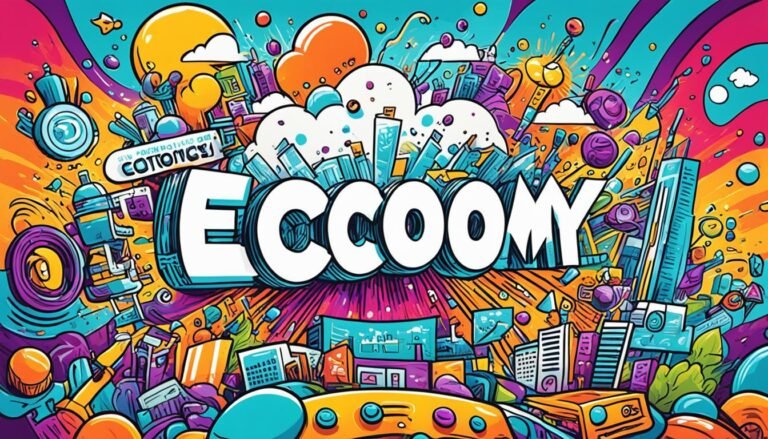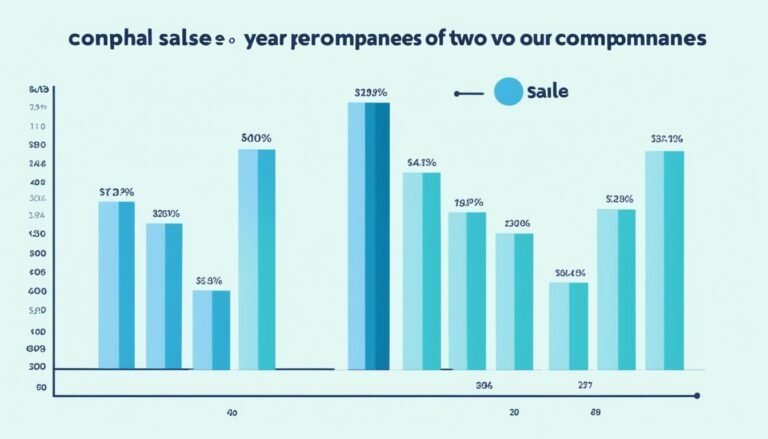The Scarcity Principle: Creating Urgency and Desire
Have you ever rushed to buy something before it was gone? Scarcity greatly affects our buying choices and a company’s success. But what is the scarcity principle, and how do marketers use it to boost demand? Let’s dive into the psychology behind this key marketing tactic.
Key Takeaways
- The scarcity principle says that when something is rare, we value it more. This is a basic idea in economics.
- Marketers use this principle to make products seem urgent and special. This makes people buy faster.
- Offering limited-time deals, special editions, and exclusive access are good ways to use the scarcity principle.
- This principle can increase sales and make products seem unique and high-end. But it must be real to keep customers trusting you.
- Feeling urgent and rare can change how people act, making them buy on impulse and put less important things last.
What is the Scarcity Principle?
Dr. Robert Cialdini explains the scarcity principle. It says that the harder to get a product, offer, or content is, the more valuable it seems to people. This makes people act quickly, wanting to buy before it’s too late.
The Law of Supply and Demand
The scarcity principle is linked to the law of supply and demand. When there’s not much supply and high demand, prices go up. This makes people feel they must act fast, not to miss out on something rare or soon gone.
Definition of the Scarcity Principle
The scarcity principle means that limited products or services become more appealing. People see them as more valuable, which increases demand. With high demand and limited supply, prices rise, keeping the scarcity cycle going.
Using the scarcity principle well helps avoid overthinking and pushes for quick action. It taps into the fear of missing out and the worry of losing something valuable.
“Scarcity influences us due to our inclination for shortcuts and our aversion to losing freedoms we already possess.” – Dr. Robert Cialdini
How Scarcity Impacts Consumer Demand
When a product or service is hard to find, more people want it. This makes businesses raise their prices because they know people will pay. The idea that something is rare makes people act fast to get it.
They’re willing to pay more because they think missing out is worse than the cost. This shows how scarcity can make companies more profitable.
Scarcity is a big idea in economics. It’s about the difference between what’s available and what people want. In business, things like import bans, limited drug production, and bad harvests cause shortages.
These situations let companies use scarcity marketing well.
“Scarcity refers to the limited availability of resources compared to demand, impacting how individuals allocate and manage resources.”
Marketing tricks like limited-time sales and fake stock shortages make people feel they must act fast. Things like special deals and limited choices also make people think something is more valuable. Good messages from companies push people to buy sooner.
Using scarcity marketing, companies can make more people want their products. It motivates people to buy quickly and makes the brand seem more exclusive. Companies use things like limited stock and special editions to use the scarcity idea well.
Scarcity and urgency change how people make decisions. They might choose what they need now over what they might need later. This thinking, called the “scarcity heuristic,” can lead to quick, maybe not thought-out, choices, especially when stressed.
It’s important to balance immediate needs with long-term plans to use resources well.
Using the Scarcity Principle in Marketing
Marketers use the scarcity principle to make people want things more. They do this by offering deals that won’t last long, showing how many are left, or telling customers when products are back. This makes people want things more and act fast.
Scarcity Marketing Tactics
Some common ways to use scarcity in marketing are:
- Flash sales with a limited time window
- Displaying the number of remaining items in stock
- Sending “back in stock” notifications to alert customers
Examples of Scarcity in Marketing
Many brands use the scarcity principle in their marketing. For example, Nike releases special sneakers that aren’t available for long. This makes them seem exclusive and in demand. Snapchat’s Spectacles were introduced in a way that made them seem rare. Nintendo also had trouble keeping up with demand for the Wii, making it seem like it was hard to get.
Using scarcity with social proof works well. This means showing how many people want a product or what others think of it. It makes people feel like they might miss out if they don’t act fast.
“Psychologists have found that consumer goods become more desirable when they appear rare. This leads consumers to choose more of their favorite items when perceived as scarce, whether the scarcity is real or simulated.”
By using the scarcity principle, brands can make things seem urgent and special. This can lead to more sales and customers getting involved. Things like limited-edition products and flash sales with timers are great ways to use scarcity in marketing.
The Scarcity Principle: Creating Urgency and Desire
The scarcity principle is a key marketing strategy that grabs consumers’ attention. By limiting the supply of a product or service, businesses make it seem more valuable and urgent. This encourages customers to buy before it’s too late.
This approach can greatly increase sales and make customers really want what they’re offering. Research shows that using scarcity can boost sales in SaaS companies. It makes customers feel they must act fast, leading to quicker purchases.
Offering products for a limited time can push customers to buy sooner. Also, showing that a product is in short supply can make customers worry they’ll miss out. This fear can make them buy faster to not miss the opportunity.
Companies like Dropbox, Salesforce, and Adobe have seen success with this method. Dropbox, for example, grew from 100,000 users to over 4 million in just 15 months. This shows how scarcity can really influence consumer behavior.
But, it’s important to be honest and not overdo it. If customers feel you’re making up scarcity to trick them, it can hurt your brand. Being open and true is key when using scarcity in marketing.
“Scarcity taps into the fear of missing out and triggers a sense of competition, heightening desire for scarce items.”
In summary, the scarcity principle can be a strong marketing tool. But, it needs to be used thoughtfully to respect the customer. By making a real sense of urgency and desire, businesses can use this psychological effect to boost sales and engage customers.
Brands That Leveraged Scarcity Successfully
The scarcity principle has helped many brands engage customers and increase sales. Nike and Snapchat are great examples of companies that use scarcity well.
Nike and Limited-Edition Sneakers
Nike, a famous sportswear brand, uses scarcity to boost sales. They release limited shoes in their SNKRs app. This makes customers rush to the app early to get the shoes before they’re gone.
Nike says getting shoes is like a lottery, not just for the first ones there. This makes the shoes seem exclusive and urgent. It makes people want them more.
Snapchat Spectacles and Snapbots
Snapchat’s parent company, Snap Inc., launched Snapchat Spectacles in 2016. These were sold through Snapbots, fun vending machines in US cities. There were no announcements before they showed up, so people waited to buy them.
This surprise and limited stock made people want the Spectacles more. It was all about getting them before they were gone.
Nike and Snapchat use scarcity to make things seem special and urgent. This approach has helped them engage customers and sell more. By making their products rare, they tap into our desire for unique items. This gives them an edge in the market.
Balancing Scarcity and Authenticity
The scarcity principle can be a strong marketing tool. But, brands must find the right balance. They need to create urgency without losing authenticity. Using too much scarcity or making it fake can harm a brand’s image and trust with customers.
Marketers should focus on real scarcity, not made-up ones. This means telling the truth about how many products or services are available. Being honest and transparent helps brands use scarcity to boost demand. It also keeps their trust and reputation strong.
“Scarcity is a powerful marketing tool, but it must be used responsibly. Brands that strike the right balance between scarcity and authenticity are the ones that will succeed in the long run.”
Successful brands use tactics like limited-edition releases and exclusive offers. These make customers feel special and in a hurry. But they don’t trick or mislead people.
To balance scarcity and authenticity, brands need clear communication and honest inventory. They must truly care about giving value to customers. By doing this, brands can use scarcity to get more engagement and sales. They also keep their trust and reputation strong over time.
The Role of Urgency in Fulfilling Needs
Urgency is key in pushing people to meet their basic needs and wants. Feeling urgent makes us more alert and ready to act towards our goals. This feeling comes from inside us and from outside, greatly affecting our drive.
Urgency and Motivation
Urgency is all about time, as we can’t make more of it. It changes how we set goals, making us focus on what’s most important when time is short. Some marketers have improved sales by 332% by creating a sense of urgency with their customers.
Urgency and Decision-Making
Urgency also changes how we make decisions, especially when it’s about basic needs and wants. When things are scarce, we get more focused and quick in choosing. This urgency makes us pick what we really need over what we just want. But, it can also lead to making bad, quick choices, valuing things too much when they seem rare. Behavioral economists have found that the “scarcity heuristic” makes us overvalue scarce resources, leading to fast, sometimes poor, buying decisions.
Understanding urgency’s role in meeting needs is key to knowing how people behave and decide. By grasping how urgency affects motivation and decision-making, marketers and businesses can use it to boost customer interest and sales.
Conclusion
The scarcity principle is a strong marketing tool. It makes people feel urgent and want things more. By making a product or service rare, companies make it seem more valuable. This makes people want it more and buy it fast before it’s too late.
This method can really help increase demand and sales. But, it’s important for brands to be real and not seem like they’re tricking people. They need to know why people act this way and use that knowledge to make good marketing.
Using the scarcity principle well is key. Brands should be careful and really understand how people behave. By using scarcity but staying true and building trust, brands can make marketing that really grabs people. This helps sell more and build strong relationships with customers.
Source Links
- The Scarcity Principle: How 7 Brands Created High Demand
- How To Use Urgency Words To Improve Your Conversions
- What Is Scarcity Principle? | Applications & Impact on Consumer Behavior
- Scarcity design pattern
- What Is The Scarcity Principle? Scarcity Principle In A Nutshell – FourWeekMBA
- How Scarcity and Urgency Fulfill Basic Needs and Desires – Freedom to Ascend
- Limited Stock: The Art of Scarcity and its Impact on Consumer Behavior
- Scarcity Marketing: The Principle Of Demand Generation
- 5 Clever Scarcity and Urgency Examples to Boost Your Conversions
- How to Use The Scarcity Principle to Drive More Sales + 6 Scarcity Marketing Examples
- 7 Ecommerce Scarcity Marketing Tactics to Supercharge Sales
- Scarcity Principle: What It Is and How to Apply It to SaaS Marketing
- Scarcity Selling? Just Don’t Be Sleazy About It
- For a Limited Time Only – Using the Scarcity Principle in Marketing – The Dingley Press
- 7 Brands That Leveraged Scarcity Marketing Tactics to Win More Customers – Digital Marketing Agency NJ & NYC
- The Scarcity Principle: How 3 Brands Generated High Demand
- Scarcity Principles in Marketing
- Why Robert Caldini’s Influence: The Psychology of Persuasion is Essential for Authentic Brand…
- What is Scarcity? | Impact on eCommerce & Consumer Psychology
- How can you use the scarcity principle to persuade investors?
- How To Create Urgency in Sales (10 Ways)
- Creating a Sense of Urgency in Sales – why is it important? – Kona – Sales and Management Training
- How To Use The Scarcity Principle To Create Urgency And Demand For Your Offer – FasterCapital
- Scarcity Principle: Definition, Importance, and Example
- While Supplies Last: 8 Scarcity and Urgency Tips for Stores (2023) – Shopify
- The Scarcity Principle in Action: Understanding the Psychology of UX Design







